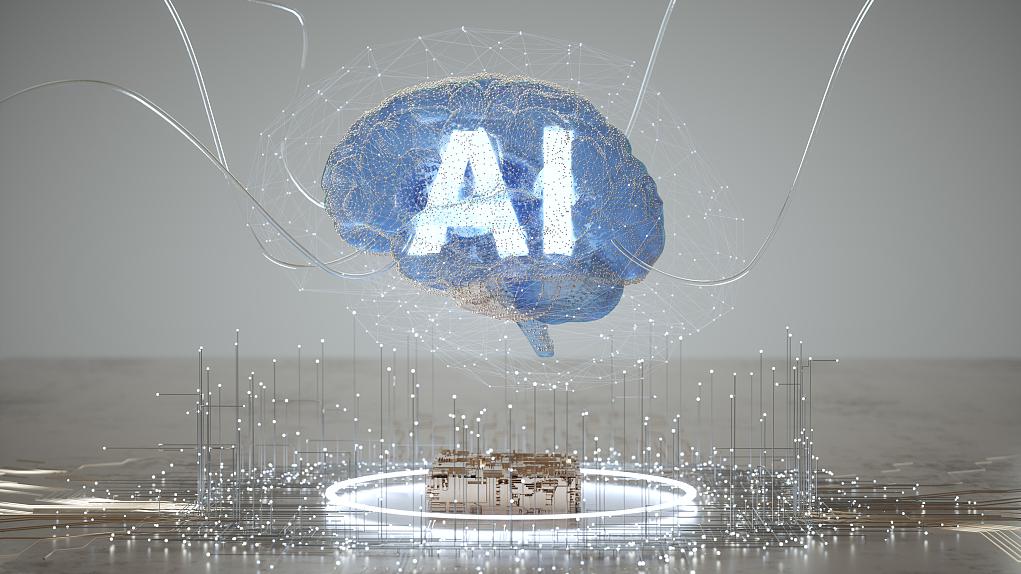

Recently, the Ministry of Science and Technology, together with the Natural Science Foundation of China, launched the special deployment work of "Artificial Intelligence-Driven Scientific Research" (AI for Science), laying out the "Artificial Intelligence-Driven Scientific Research" cutting-edge technology research and development system.
What is the background of the special deployment work of "artificial intelligence-driven scientific research"? What are the relevant points? How will it promote theoretical research and application in the field of artificial intelligence in my country? Xinhua News Agency reporters interviewed E Weinan, academician of the Chinese Academy of Sciences and director of the International Machine Learning Research Center of Peking University, and Xu Bo, leader of the implementation expert group of the major project of "New Generation Artificial Intelligence" for scientific and technological innovation 2030-"New Generation Artificial Intelligence", and director of the Institute of Automation of the Chinese Academy of Sciences. 2030- Zhang Linfeng, a member of the expert group for the implementation of the "New Generation Artificial Intelligence" major project and vice president of the Beijing Institute of Scientific Intelligence, gave a detailed interpretation of the special deployment work of "Artificial Intelligence-Driven Scientific Research".
Artificial intelligence has become a new paradigm of scientific research
Q: What is the background and significance of promoting the special deployment of "artificial intelligence-driven scientific research"?
Xu Bo: With the vigorous development of the new generation of artificial intelligence technology, the scientific research paradigm is undergoing new changes, promoting major discoveries and breakthroughs in basic science. Artificial intelligence has become a new paradigm of scientific research after experiment, theory and calculation.
At present, artificial intelligence technology has demonstrated powerful capabilities beyond traditional mathematics or physical methods in many scientific research fields, but in the systematic layout of "artificial intelligence-driven scientific research", major system design, interdisciplinary integration, and innovation ecological construction There is still room for improvement.
In recent years, the rapid development of artificial intelligence technology in my country, the increasingly abundant scientific research data and computing power resources, and the continuous expansion of application scenarios in the field of scientific research have laid a solid foundation for accelerating the development of "artificial intelligence-driven scientific research".
In order to seize new opportunities for artificial intelligence-driven scientific research, the Ministry of Science and Technology, together with the Natural Science Foundation of China, launched the special deployment work of "artificial intelligence-driven scientific research", which will further strengthen the overall guidance and system layout of its innovation work, and give full play to my country's Advantages in artificial intelligence accelerate scientific research paradigm change and capability improvement, and promote artificial intelligence to a new stage of high-quality application.
E Weinan: We are ushering in a new round of scientific and technological revolution. A very important point is that scientific research has changed from a "workshop" model to a "platform scientific research" model.
In scientific research activities, such as materials research and biopharmaceutical research, there are many commonalities. The physical models and basic principles used in theory are limited and have commonalities, as do the experimental methods used in research. The development of artificial intelligence technology so far allows us to connect these common tools in series, look at scientific research from a holistic perspective, and greatly improve the efficiency of scientific research. "AI-driven scientific research" has the potential to propel us to the forefront of the next technological revolution.
"Artificial intelligence-driven scientific research" for the major reconstruction of disciplines and knowledge systems
Q: What are the characteristics of "artificial intelligence-driven scientific research"? What is the level of research in related fields in my country?
Zhang Linfeng: One of the biggest features of "artificial intelligence-driven scientific research" is that it connects people from different disciplines and backgrounds in an unprecedented way.
"Artificial intelligence-driven scientific research" not only requires the cross-integration of computer, data science, materials, chemistry, biology and other disciplines, but also requires more in-depth theoretical construction and algorithm design in basic disciplines such as mathematics and physics. It is a discipline and knowledge The process of major system restructuring.
E Weinan: "Artificial intelligence-driven scientific research" is the product of the deep integration of "artificial intelligence technology represented by machine learning" and "scientific research".
With the help of machine learning's ability to express high-dimensional problems, humans can describe the mechanism of complex systems in a more realistic and detailed manner. Improve the efficiency of scientific research and original innovation for a more logical knowledge decision-making system or a more practical tool.
In recent years, many domestic universities and scientific research institutions have been actively deploying in the field of scientific intelligence, and domestic enterprises are also investing huge efforts to promote the development of scientific intelligence and industrial implementation. We are the first to realize the possible impact of artificial intelligence methods on basic scientific research, comprehensively deploy artificial intelligence-driven scientific research and cultivate scientific research teams, combine artificial intelligence methods, high-performance computing and physical models, and have been at the forefront of the world .
Focus on key issues in basic disciplines and focus on scientific research needs in key areas
Question: What are the considerations for the disciplines combined with the surrounding fields of this special deployment work?
Xu Bo: Mathematics, physics, chemistry, astronomy, earth science, life science and other basic disciplines provide an important theoretical basis for the development of science and technology, and closely combine the key issues of these basic disciplines to lay out the cutting-edge technology research and development system of "artificial intelligence-driven scientific research". It is an important guarantee to enhance the competitiveness of basic scientific research.
Drug research and development, gene research and other fields are important and representative directions where the combination of artificial intelligence and scientific research is in urgent need, outstanding progress, and representative. For example, artificial intelligence models based on biological mechanisms, disease and drug-related data, and various pharmaceutical properties of drugs can predict the safety and effectiveness of new drugs, and reduce manpower, material resources, and time in the research and development process through artificial intelligence assistance. Investment to improve the success rate of drug development.
It is worth noting that artificial intelligence methods in scientific research cannot simply copy the existing models and algorithms that we are familiar with, such as computer vision and natural language processing, but need to integrate artificial intelligence according to the specific conditions of each basic science. Intelligent technology is deeply combined with the domain knowledge of natural science and technical science to develop targeted intelligent algorithms, models and software tools.
Strengthen the systematic layout and create an intelligent scientific research and innovation ecology
Q: What are the future plans and suggestions for "artificial intelligence-driven scientific research"?
Xu Bo: Scientific and technological innovation 2030-"New Generation Artificial Intelligence" major project will continue to strengthen the systematic layout and support in the second five-year implementation phase (2023-2027), and promote the research of new theories, new models, and new algorithms. Research and develop software tools and special platforms, promote the upgrading of software and hardware computing technology, and create an open source and open innovation ecosystem for intelligent scientific research.
In the future, under the guidance of the national "New Generation Artificial Intelligence Development Plan" and the coordination of the New Generation Artificial Intelligence Planning Promotion Office, we will accelerate the convergence of elements such as talents, technology, data, and computing power to form and promote "artificial intelligence-driven scientific research." "Policy synergy.
In terms of platform support, the Ministry of Science and Technology is accelerating the construction of an open and innovative platform for national new-generation artificial intelligence public computing power; in terms of mechanism innovation, the Ministry of Science and Technology encourages user units to deeply explore technical needs and scientific issues around business, and deeply participate in model research and algorithm innovation , Actively open data and resources.
E Weinan: Focusing on the future development of "artificial intelligence-driven scientific research", we must first allocate resources to front-line scientific researchers who do practical things. At the same time, there must be an effective personnel training system to cultivate talents who have a full understanding of basic principles and practical problems.
In addition, there must be an effective organizational form to build a vertically integrated team. "Artificial intelligence-driven scientific research" puts forward new requirements for scientific research teams, truly allowing artificial intelligence researchers to work together with researchers in the field of basic science to conduct high-frequency daily academic exchanges, and at the same time introduce engineering talents, starting from industry needs , to develop new tools and software that can be practically applied and continuously iterated.


